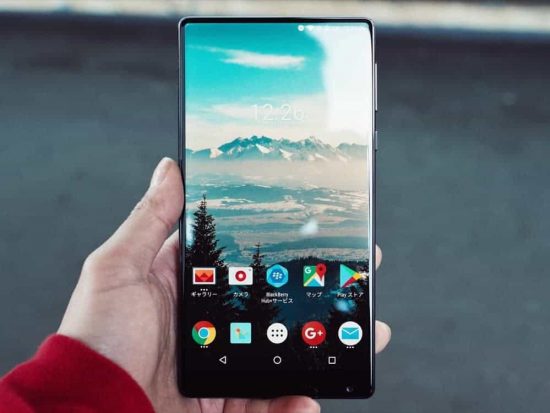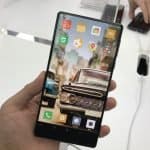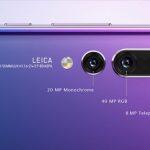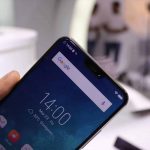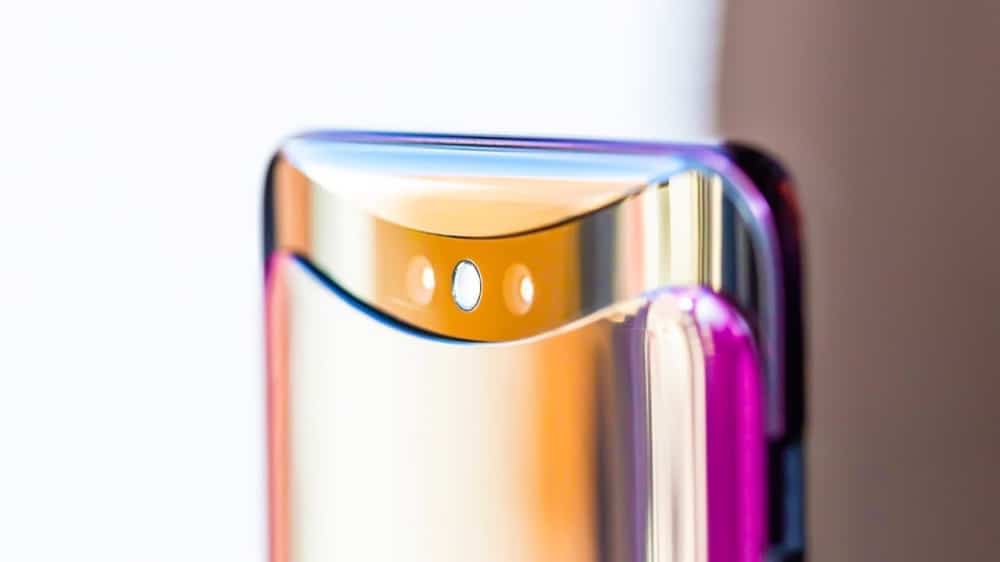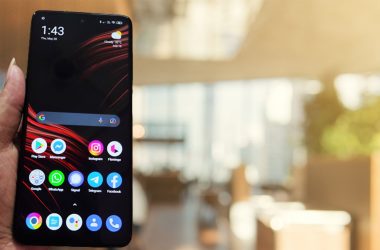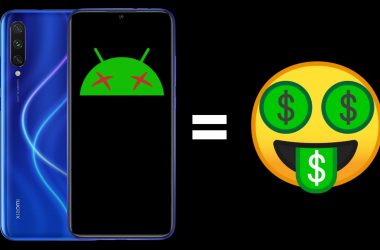It’s been 11 years since the first iPhone launched, and it was one of the most significant innovations in tech. It took the mobile phone segment by storm and made touch-screen phones mainstream. Since then, Apple has put effort into re-designing, creating a perfect iPhone to the masses, but we’ve not seen a complete change over till the iPhone 6. The design of the iPhone 6 is entirely different from the previous iPhones, and from then on, Apple has adopted the same form factor till iPhone 8 Plus. Last year, on the eve of iPhone’s 10th anniversary, the Cupertino giant came up with a revolutionary iPhone which the company claims to be a future phone. iPhone X is indeed a revolutionary phone with narrow bezels, but there’s something the company couldn’t come up with is the in-display fingerprint sensor and get rid-off the top-notch.
There were many rumors on the iPhone X that it would be completely bezel-less and have an in-display fingerprint sensor, but most of the stories ended up as a rumor. When the iPhone X launched, most of the tech critics made fun of the notch, but it’s mainstream now. Every major brand in the smartphone market is adopting it. It’s not something that adds up as a feature, but the brands were copying as they felt it’d be a strong asset for them as Apple introduced it.
In between iPhone 1st-gen and the iPhone X, there were several innovations in the smartphones, and a few of them were from the South Korean giant Samsung. No wonder why Samsung and Apple are the most prominent players in the smartphone market now. Unlike Nokia, Samsung quickly adopted the Android and introduced several smartphones in its Galaxy S and Note series.
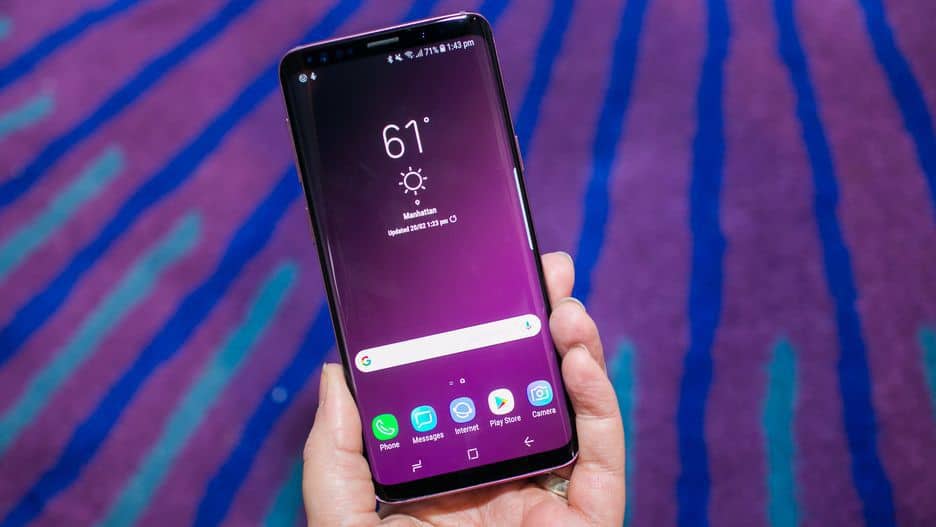
The Galaxy S9 and S9 Plus are indeed the best smartphones available now, but they are not much different from their predecessors. Samsung was indeed the first OEM to introduce edge displays, which were a significant breakthrough in the phone’s screen at that time. From the S6 Edge, the company concentrated on innovating displays, but when you see it overall, there isn’t much innovation that the company claimed to be. They did put effort into making bezels thin, and thankfully, not introduced any notches, but when you see the competitors, they are way ahead of Apple and Samsung now. The competitors are not LG, HTC, or Nokia; I’m talking about Chinese mobile brands that are innovating the smartphone industry now.
“Until last year, we were living in a dream that the innovation is only possible by Apple and Samsung and the rest just copies it.”
Well, it’s no longer valid as several of these Chinese brands’ smartphones have already proved to be innovative. Their innovations in terms of design, camera, etc. made several other brands follow it [copy it]. Why don’t we break it down one by one?
Evolution of Chinese Mobile Brands In terms of Innovation:
At first, the Chinese brands did take the design inspiration from iPhones and several Galaxy S and Note series for generations, but they quickly adapted to the changes.
- Bezel-less Phone Trend: The first innovation in the design & display I remember was from Xiaomi. Xiaomi’s Mi Mix wasn’t the first smartphone to have a bezel-less design, which launched in 2016, but it became a catalyst. Several OEMs followed it, and now it’s possible to see a truly bezel-less phone in your hand, thanks to Vivo and Oppo!
- Fast Charging: In the same year, the Chinese brand Oppo which in the future occupies a significant market share in India, introduced a new technology that could charge up to a 2,500mAh battery in just 15 minutes. It was one of the critical elements in brands adapting to fast charging. Also, that’s the same year when Samsung launched Note 7, which was a disaster. Recently, Vivo showcased a 120W fast charger, which could power up a 4,000mAh battery in just 13 minutes.
- Dual Camera Setup: Though LG and HTC were one of the first to introduce the dual-camera setup on their phones, it was Huawei, the Chinese mobile brand, which made it famous. In 2016, Huawei incorporated the Leica lens on its Huawei P9 and gave the monochrome a re-birth. Moreover, it was the first Huawei phone to feature a dual-camera setup. Later the iPhone 7 Plus was introduced with the dual-camera setup, which was followed on its successors too. Samsung was very late to the party as the first dual-camera setup on its phone was Note 8
- Nonetheless, Huawei is a pioneer in the dual camera segment as it made it available in the budget-end section, which was quite a big thing at that time. Now every 2018-ish smartphone has a dual-camera setup on the rear side where the second camera could be monochrome, telephoto, depth-sensing or a wide-angle one
- Triple Camera Setup: Yet again, Huawei was the very first brand to introduce a triple camera setup on its P20 Pro. It’s truly a revolutionary as the outcomes from the phone are by far the best shots from any flagship. Even now, no other brand was able to achieve this feat
- Gradient Color Variants: Huawei P20 Pro is famous not only for its triple camera setup but also for the industrial design. It’s one of the first phones to have a gradient color option on the back. The iridescent paint job truly impressed everyone. Again, no other company has done it yet.
- New Aspect Ratio: Until last year, the majority of smartphones were using a 16:9 aspect ratio, but the 18:9 aspect ratio is what we’re seeing in every smartphone now. Though LG was the first to introduce it in G6, it was the Chinese mobile brands that made it available to everyone. Several smartphones from Huawei, Oppo, and Vivo in the budget-end segment were featured to have this aspect ratio.
- Adopting Notch Design: Apple iPhone X was the first to feature the notch, but it was quickly copied by several Chinese brands and promoted in their ways. Vivo was the first to launch its notch phone V9 in India, which touted to have a relatively smaller notch than iPhone X. This bezel-less notch design quickly made the 19:9 aspect ratio and a higher screen-to-body ratio possible. It might not be an innovation, but the idea of creating truly bezel-less phones started with this.
- In-display Fingerprint Sensor: From the past few years, LG, Samsung, and Apple were working rigorously to feature an in-display fingerprint scanner, but it was Vivo who shocked the world with their Vivo X21 with this feature. There’s no information on Note 9, or the upcoming iPhones would feature this, and the only phone available with this feature in the market now is Vivo’s X21. The technology behind this is truly revolutionary!
- Foldable Smartphones: Foldable smartphone has always been a myth as bending a display would kill it, but there were several improvements in the display tech, and now it’s possible. Though LG and Samsung have worked on flexible displays, it was Royole, a Chinese OEM who was the first to showcase a foldable smartphone. Later, Huawei, Samsung, and Nubia showcased their foldable smartphones
- Hole Punch Displays: Even though Apple introduced notch, it was Chinese OEMs who made it available to masses. In the same way, Samsung was the first to showcase a hole-punch display, but it was Vivo and Huawei, who became famous by launching several smartphones. It’s not quite right to give credit, but it’s worth noting that a 15K INR phone has also got a hole punch display now [thanks to Vivo]
- In-display Camera: For the very first time, Oppo and Xiaomi have showcased under-display camera sensors on their upcoming smartphones. It would change everything as the truly bezel-less smartphone would finally be possible. There’s no clue on when Apple & Samsung cope with this.
“The entire evolution of the Chinese brands from copying to innovating is also the evolution of smartphones becoming intelligent as well as truly bezel-less.”
I’d recommend going through the list again as you might find a pattern. Alright, let me give it away. You might have noticed that the more prominent brands like Apple and Samsung would emphasize their unique features in their flagships and usually keep them at a high price. Along with that, they take almost a year to launch their next flagship, and until then, people would assume that it’s the end of the innovation for the year. It is where the Chinese brands kicks-in.
They know that introducing the significant features on the flagship would result in saturation as of the competition from the big players. So, featuring in the mid and budget-end segment would make them bring more sales. That is where they become successful. Introducing new flagships might take at least two quarters, but the budget-end sections could be launched monthly. A good example could be what Vivo is doing.
- Vivo was one of the first brands to launch the notch-phone in India. V9 is already a big hit in the market in terms of sales
- In the following month, the company introduced X21, which is very similar to V9 but has its proprietary technology – the in-display fingerprint sensor. No other phone in the market has this feature, and that’s what makes it unique
- In the coming days, the company is launching a new smartphone, which is based on their concept phone Apex. It’s by far the almost bezel-less phone available in the market now. With the introduction of the Nex series, the company could be far ahead of the notch phones
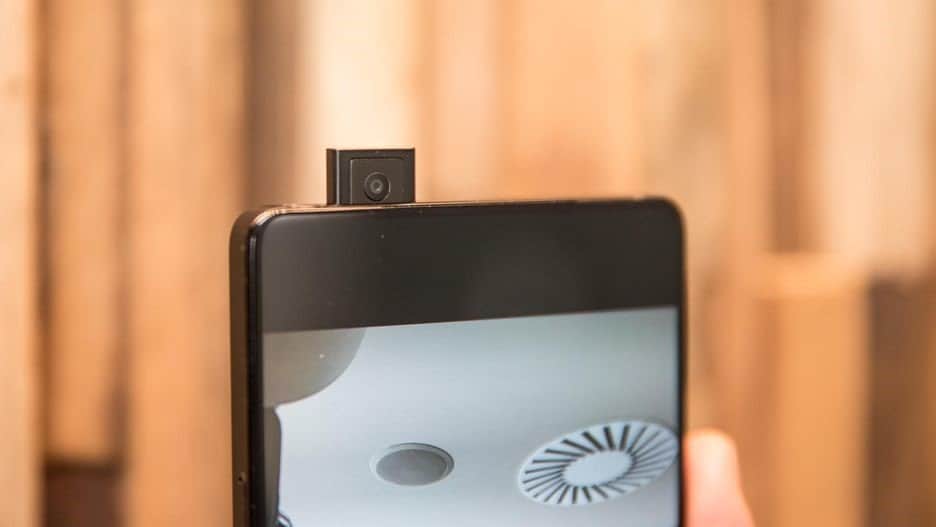
What to see in here is, the Chinese mobile brands are betting big on R&D and fixing the design problems in the smartphones. The very purpose of the notch is to house the front-facing camera as well as the sensors, but in the Nex series, you won’t find the notch. So, where would be the front camera? The possible design idea from Sharp Electronics to Xiaomi is to keep it at the bottom. But to give a complete bezel-less experience, either it should be inside the display, which is not possible now. So, what Vivo did is used a motorized function to popup the selfie camera from the top. I’d not say it’s an innovation, but serves the purpose of giving a full view experience to the user.
Its sister company Oppo has done a similar functionality in its Find X. The only difference is, instead of popping up just the selfie camera, the phone slides up both rear and front cameras when needed, thereby giving the complete bezel-less experience.
A motorized function is indeed unreliable, but it’s not the end from the design perspective. At least, a few of these Chinese companies are not sticking to the regular form factor for years that Apple and Samsung are doing. Also, they are not taking much time to introduce new technological advancements as well as design changes to the market. So, I can say that the Chinese companies are outgrown the big players in the market, and are quite innovative now. Let me know what’s your take on this in the comment section.




